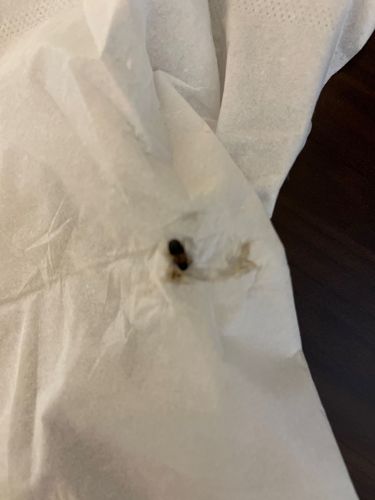Beetle (likely species unknown from image)
Scientific Name: Too ambiguous to identify specific genus/species (e.g., *Tenebrio molitor* for a mealworm beetle, or *Anobium punctatum* for a common furniture beetle, if it were clearer).
Order & Family: Order: Coleoptera. Family: Cannot be determined with certainty from the provided image fragments, as only small, dark fragments are visible, likely excretions or crushed remains of an insect.
Size: Beetle sizes vary greatly, from less than 1 mm to over 17 cm. The fragments in the image appear to be small, but it's impossible to gauge the original size of the organism.

Natural Habitat
Beetles can be found in nearly every habitat on Earth, including terrestrial and freshwater environments. This includes forests, grasslands, deserts, agricultural fields, and even within human dwellings. The visible material (tissue/paper) doesn't indicate natural habitat.
Diet & Feeding
The diet of beetles is extremely diverse. It can include plants (herbivores), other insects (predators), decaying organic matter (detritivores), fungi, or even animal waste. Due to the limited clarity, it's not possible to specify exact diet.
Behavior Patterns
Beetles undergo complete metamorphosis, meaning they have four life stages: egg, larva, pupa, and adult. Many species are nocturnal. Their behavior patterns vary widely depending on the specific species; some are solitary, while others may aggregate.
Risks & Benefits
Risks: Some beetles can be agricultural pests, destroy wood structures, or transmit diseases (though this is less common compared to other insects like mosquitoes). Benefits: Many beetles are beneficial as pollinators, decomposers, or as natural predators of pest insects. Given the unclear image, specific risks or benefits cannot be identified.
Identified on: 8/28/2025